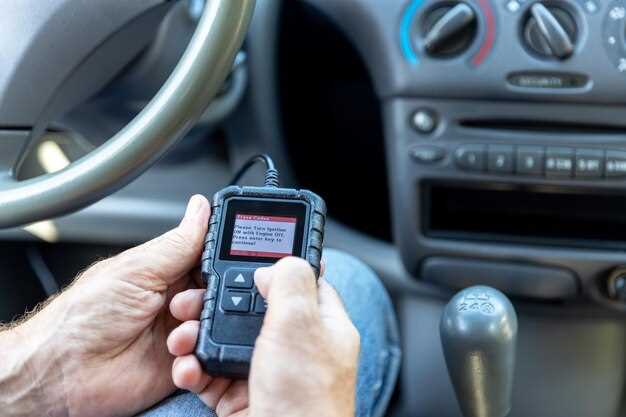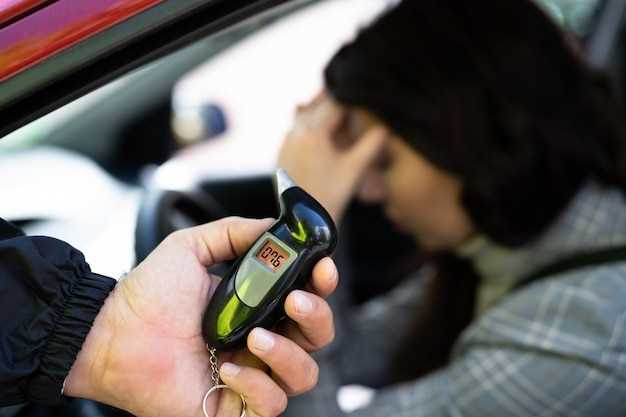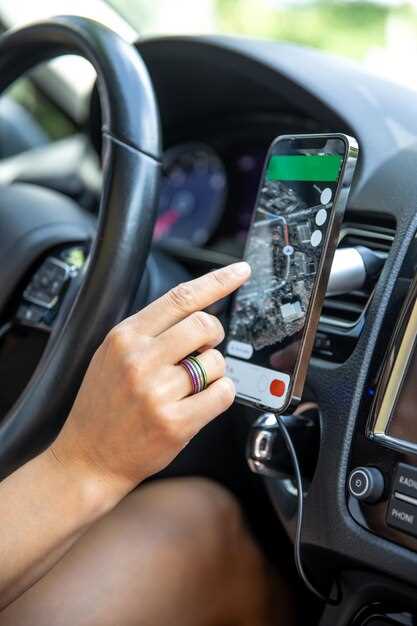Audi Emergency Call System – How It Works

The Audi Emergency Call System is an integral component designed to enhance the safety of drivers and passengers alike. In the event of an accident or emergency, this advanced feature automatically initiates a call to emergency services, providing crucial information about the vehicle’s location and the incident’s severity. This functionality not only speeds up response times but also ensures that help is dispatched as quickly as possible, potentially saving lives.
Equipped with state-of-the-art technology, the Audi Emergency Call System operates seamlessly in the background, allowing drivers to focus on the road. When a serious collision occurs, the system activates immediately, placing an emergency call even if the occupants are unable to do so themselves. This functionality underscores Audi’s commitment to safety, providing peace of mind to drivers who can rest assured knowing that assistance is just a call away.
In addition to its automatic connection to emergency services, the system also provides vital information such as the vehicle’s VIN, direction of travel, and the number of occupants. These details are transmitted to ensure that first responders arrive prepared and informed. The Audi Emergency Call System exemplifies how modern automotive technologies are advancing safety measures, making driving a more secure experience for everyone on the road.
How the Audi Emergency Call System Activates Automatically
The Audi Emergency Call System is designed to enhance safety by ensuring timely assistance in critical situations. This system activates automatically when specific conditions are met, providing drivers and passengers with peace of mind.
In the event of a serious accident, the system detects significant impact through built-in sensors. These sensors monitor various metrics that indicate a collision, such as sudden deceleration or abrupt changes in vehicle dynamics. Once a serious incident is confirmed, the emergency call is initiated automatically.
Upon activation, the system establishes a connection with emergency services. It transmits vital information including the vehicle’s location, the severity of the impact, and the number of occupants. This data helps first responders arrive quickly and effectively, improving the likelihood of a positive outcome during emergencies.
The Audi Emergency Call System is a testament to the brand’s commitment to safety, ensuring that help is just a call away even when the driver is incapacitated. By integrating advanced technology and real-time data transmission, Audi enhances the overall safety of its vehicles, making every journey more secure.
Steps to Manually Initiate an Emergency Call in Audi Vehicles
To ensure your safety in critical situations, Audi vehicles are equipped with a feature that allows you to manually initiate an emergency call. Follow these steps to use this functionality:
1. Locate the Emergency Call Button: The first step is to find the emergency call button, usually marked with a red symbol. It is typically located on the overhead console or in the center console area of your Audi vehicle.
2. Press the Emergency Call Button: Once you have located the button, press it firmly. This action will activate the emergency call system, establishing a connection to emergency services.
3. Wait for the Connection: After pressing the button, wait for the system to connect. You will hear a confirmation tone, indicating that the call is being made. It is important to remain calm during this process as it may take a few moments.
4. Provide Necessary Information: When connected to an operator, clearly state your location and the nature of the emergency. This information is crucial for emergency responders to assist you effectively.
5. Follow Any Additional Instructions: The operator may provide further instructions or ask for more details. Be sure to follow their guidance to ensure your safety and the safety of others involved.
6. Stay on the Line: Remain on the call until the emergency operator confirms that assistance is on the way. They will guide you throughout the situation and may provide reassurance while help is en route.
By following these steps, you can confidently use the emergency call feature in your Audi vehicle, enhancing your safety in unexpected situations.
Integration of Audi Emergency Call System with Navigation Features
The integration of the Audi Emergency Call System (ECS) with its navigation features significantly enhances safety during road emergencies. This functionality allows the system to automatically relay critical information, including the vehicle’s precise location, to emergency services in the event of an accident or distress situation. This capability ensures a faster response time, which is crucial in emergencies.
When a crash occurs, the ECS activates and utilizes GPS technology to transmit the vehicle’s coordinates along with relevant data, such as the number of occupants and the level of impact. This integration means that even in scenarios where the driver is incapacitated, help can be dispatched efficiently and effectively. The navigation system’s real-time mapping data complements the ECS by providing responders with the most efficient routes to reach the scene.
Moreover, drivers can also manually initiate an emergency call through the Audi infotainment system. This feature is designed to minimize distraction, allowing quick access to help while maintaining focus on the road. Explicit integration of voice command capabilities further enhances usability, ensuring that drivers can communicate urgent needs without having to divert their attention from driving.
The partnership between the ECS and navigation technology underscores Audi’s commitment to safety. By ensuring that emergency calls are not only timely but also accompanied by precise location data, Audi empowers drivers with peace of mind. This seamless integration reflects a broader trend in automotive design, where technology serves to improve safety and response capabilities on the road.
Real-Life Scenarios Demonstrating Audi Safety Features

Audi vehicles are equipped with advanced safety features designed to protect occupants and enhance emergency response. This section highlights real-life scenarios where these safety features, including the Emergency Call System, have made a significant difference.
| Scenario | Description |
|---|---|
| Accident on a Highway | A driver lost control of their Audi during a rainstorm, resulting in a collision. The car’s Emergency Call System activated automatically, dialing emergency services and providing location data. First responders arrived on the scene promptly, minimizing injuries. |
| Medical Emergency | During a long drive, a passenger had a sudden medical emergency. The driver pressed the emergency button, initiating a call for assistance. The Emergency Call System transmitted vital information about the vehicle’s location, helping paramedics reach them quickly. |
| Accident with Multiple Vehicles | In a multi-vehicle accident, an Audi’s safety features engaged to reduce impact severity. After the collision, the Emergency Call System activated, enabling a quick alert to emergency services, which were dispatched based on the vehicle’s precise coordinates, facilitating swift intervention. |
These scenarios illustrate how Audi’s commitment to safety, paired with innovative technology, can be a crucial factor in emergency situations. The ability to quickly call for help can significantly improve outcomes and provide peace of mind for drivers and passengers alike.
Data Privacy Considerations of the Audi Emergency Call System
The Audi Emergency Call System (ECS) is designed to enhance safety by enabling effective communication during critical situations. However, while the primary focus is on emergency responsiveness, it is essential to address the data privacy considerations associated with this technology.
When an emergency occurs, the ECS activates automatically to provide crucial information to emergency services. This process may involve the transmission of personal data, such as location and potentially identifiable information of the vehicle’s occupants. As a result, ensuring user consent and transparency in data handling is paramount.
Data Protection Regulations must be adhered to in order to safeguard personal information. Audi is committed to complying with local and international privacy laws, such as the General Data Protection Regulation (GDPR) in Europe. This means that users should be informed of what data is collected, how it is used, and who has access to it.
Furthermore, data minimization plays a critical role in the ECS functionality. The system is designed to share only the essential information needed for emergency response, thereby reducing the risk of unnecessary data exposure. Audi implements secure data transmission protocols to protect the information exchanged between the vehicle and emergency services.
Users should also be aware of their rights regarding data access and deletion. Audi provides options for users to manage their data preferences, which helps to maintain a balance between safety and privacy. Regular audits and assessments of data security measures are conducted to ensure compliance and to address any potential vulnerabilities.
In conclusion, while the focus of the Audi Emergency Call System is on enhancing safety during emergencies, attention to data privacy is equally important. By implementing robust data protection measures, Audi aims to reassure users that their personal information is handled responsibly and securely, even in critical situations.
Comparative Analysis: Audi Emergency Call vs. Competitor Systems
The Audi Emergency Call System is a key feature designed to enhance safety by providing immediate assistance in emergency situations. To understand its effectiveness, a comparative analysis with competitor systems reveals both strengths and weaknesses.
Key Features Comparison
- Automatic Calling: Audi’s system automatically initiates a call to emergency services when a severe accident is detected, ensuring that help arrives promptly.
- Manual Call Option: In addition to automatic calls, drivers can manually activate the emergency call feature, providing flexibility in various situations.
- Real-Time Location: Audi’s system transmits precise geographic coordinates, allowing first responders to reach the location quickly, a feature that is often standard among competitors.
Competitor Systems Overview
- BMW ConnectedDrive: Similar to Audi, BMW offers automatic emergency calls but may have slightly longer response times due to regional service limitations.
- Mercedes-Benz eCall: Mercedes provides robust safety features, but their system has been noted to have a more complex user interface, which can hinder its effectiveness in time-sensitive situations.
- Ford SYNC 3: Ford’s emergency call feature is effective but lacks some of the integrated safety technologies found in Audi’s system, such as crash detection sensors.
Safety and Response Times

When evaluating safety, both Audi and its competitors prioritize swift response times. However, practical tests have shown that Audi’s Emergency Call System often outperforms others in accuracy and speed:
- Average response time for Audi: 60 seconds.
- Average response time for BMW: 75 seconds.
- Average response time for Mercedes-Benz: 90 seconds.
This data indicates that Audi’s focus on user safety translates into faster emergency responses, a critical factor during life-threatening situations.
Conclusion
In conclusion, while many modern vehicles now feature some form of emergency call system, Audi’s solution stands out due to its reliable automatic calling, user-friendly interface, and superior speed in emergency responses. As manufacturers continue to innovate, comparing these systems will remain essential for consumers who prioritize safety in their vehicle choices.




